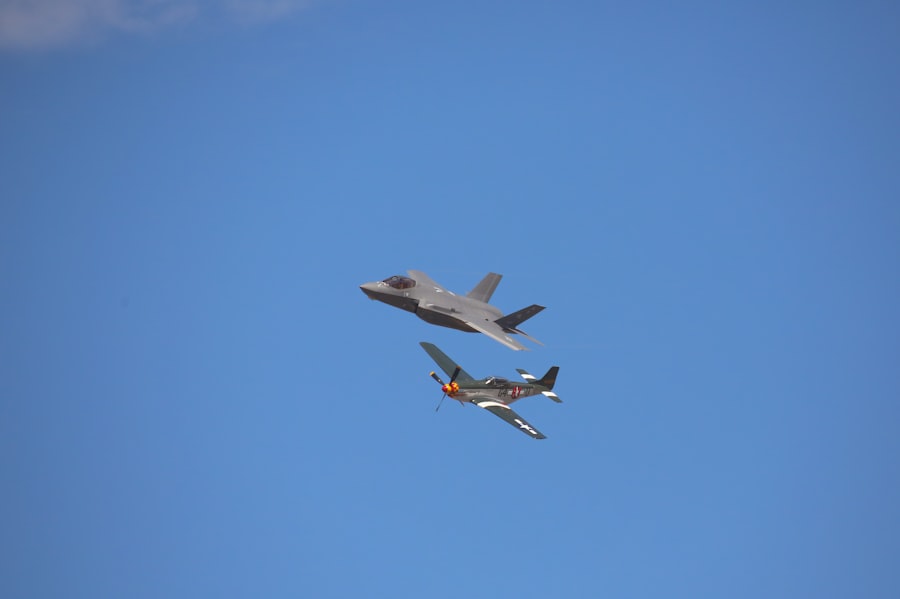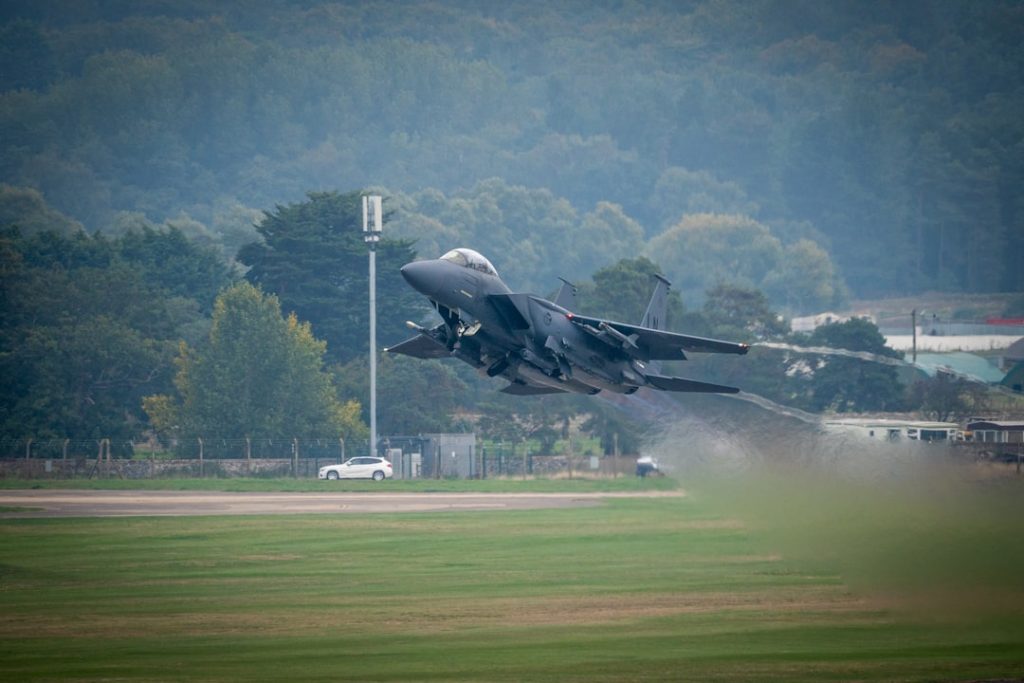The F-35 Lightning II program represents a significant leap forward in military aviation, embodying a revolution in both technology and operational capability. Developed by Lockheed Martin, the F-35 is a family of stealth multirole fighters designed to perform ground attack, aerial reconnaissance, and air defense missions. The program was initiated in the late 1990s as part of the Joint Strike Fighter (JSF) initiative, aimed at creating a versatile aircraft that could serve multiple branches of the U.S.
military and allied nations. The F-35’s design incorporates advanced stealth features, sensor fusion, and networked warfare capabilities, making it a cornerstone of modern air power. The introduction of the F-35 has not only transformed the capabilities of air forces around the world but has also redefined the nature of aerial combat.
With its advanced avionics and integrated systems, the F-35 can gather and process vast amounts of data in real-time, providing pilots with unparalleled situational awareness. This capability allows for more informed decision-making during missions, enhancing both effectiveness and survivability. As nations increasingly recognize the importance of air superiority in modern warfare, the F-35 stands at the forefront of this evolution, promising to shape the future landscape of military aviation.
Key Takeaways
- The F35 represents a revolutionary leap in air power technology, combining advanced capabilities in stealth, sensor fusion, and network-centric warfare.
- Advancements in technology and capability have enabled the F35 to perform a wide range of missions, from air superiority and strike to intelligence, surveillance, and reconnaissance.
- The F35’s impact on military strategy and operations is significant, as it provides enhanced situational awareness, interoperability, and flexibility for joint and coalition operations.
- Challenges and controversies surrounding the F35 include cost overruns, technical issues, and concerns about its performance and reliability.
- International partnerships and collaborations have played a crucial role in the development, production, and deployment of the F35, strengthening global security and defense cooperation.
Advancements in Technology and Capability
The F-35 is distinguished by its cutting-edge technology, which includes stealth characteristics that significantly reduce its radar cross-section. This stealth capability allows the aircraft to penetrate enemy defenses undetected, a critical advantage in modern combat scenarios where adversaries possess advanced air defense systems. The design features such as internal weapons bays and radar-absorbent materials contribute to its low observability, enabling it to operate in contested environments with reduced risk.
In addition to its stealth features, the F-35 is equipped with an array of advanced sensors and avionics that enhance its operational effectiveness. The Distributed Aperture System (DAS) provides pilots with a 360-degree view of their surroundings, integrating data from multiple sources to create a comprehensive picture of the battlefield. This system not only improves situational awareness but also allows for advanced targeting capabilities, enabling the F-35 to engage threats with precision.
Furthermore, the aircraft’s sensor fusion technology combines information from various onboard systems, allowing pilots to make rapid decisions based on real-time data.
Impact on Military Strategy and Operations

The introduction of the F-35 has had profound implications for military strategy and operations across the globe. Its ability to operate in a networked environment allows for enhanced coordination among allied forces, facilitating joint operations that leverage the strengths of multiple platforms. The F-35’s role as a “fifth-generation” fighter means it can work seamlessly with other advanced systems, such as unmanned aerial vehicles (UAVs) and ground-based assets, creating a more integrated approach to warfare.
Moreover, the F-35’s capabilities have prompted a reevaluation of traditional military doctrines. As adversaries develop increasingly sophisticated air defense systems, the need for stealthy platforms like the F-35 becomes paramount. This shift has led to changes in tactics, emphasizing the importance of information dominance and precision strikes over sheer firepower.
The aircraft’s ability to gather intelligence and share it across networks enhances decision-making processes, allowing commanders to respond more effectively to emerging threats.
Challenges and Controversies Surrounding the F35
| Challenges and Controversies | Description |
|---|---|
| Cost | The F35 program has faced criticism for its high cost and budget overruns. |
| Technical Issues | The aircraft has experienced various technical problems, including with its software and systems. |
| Performance | Some have questioned the F35’s performance compared to other aircraft, particularly in dogfighting scenarios. |
| International Partnerships | There have been concerns about the management of international partnerships and the sharing of technology. |
| Maintenance and Sustainability | Issues have been raised about the long-term maintenance and sustainability of the F35 fleet. |
Despite its many advancements, the F-35 program has not been without its challenges and controversies. One of the most significant issues has been the program’s cost overruns and delays. Initially projected as a cost-effective solution for modern air forces, the F-35 has faced criticism for its escalating expenses, which have raised concerns among policymakers and military leaders alike.
The complexity of its design and the integration of numerous advanced technologies have contributed to these challenges, leading to questions about whether the program can deliver on its promises within budgetary constraints. Additionally, there have been concerns regarding the aircraft’s performance in certain operational scenarios. While the F-35 excels in many areas, some critics argue that it may not match the raw performance metrics of older fourth-generation fighters in specific contexts.
Issues related to maintenance and reliability have also surfaced, with reports indicating that some variants of the aircraft may require more frequent servicing than anticipated. These challenges have sparked debates about the long-term viability of the F-35 as a cornerstone of future air power.
International Partnerships and Collaborations
The F-35 program is notable not only for its technological advancements but also for its extensive international partnerships. Several allied nations have invested in the program, contributing to its development while also securing access to advanced military capabilities. Countries such as the United Kingdom, Italy, Australia, and Japan have become key partners in the F-35 initiative, participating in various stages of production and procurement.
These collaborations extend beyond mere financial investment; they foster interoperability among allied forces. By standardizing equipment and training procedures around a common platform like the F-35, partner nations can enhance their collective defense capabilities. Joint exercises involving F-35s allow for shared tactics and strategies, improving coordination during multinational operations.
This collaborative approach not only strengthens military alliances but also promotes stability in regions where these nations operate together.
Economic and Industrial Implications

The economic impact of the F-35 program extends far beyond military budgets; it has significant implications for industrial sectors involved in defense contracting and aerospace manufacturing. The program has created thousands of jobs across various states in the U.S., supporting a vast supply chain that includes numerous subcontractors and suppliers. This economic footprint underscores the importance of defense spending not only for national security but also for local economies reliant on defense contracts.
Moreover, international partnerships related to the F-35 have opened new markets for U.S. defense contractors. As allied nations procure F-35s, they often engage in co-production agreements that allow them to participate in manufacturing components or systems for the aircraft.
This collaboration not only strengthens economic ties between nations but also enhances technological exchange, fostering innovation within domestic industries.
Future Developments and Upgrades
Looking ahead, the F-35 program is poised for continuous evolution through ongoing developments and upgrades. As technology advances at an unprecedented pace, Lockheed Martin and partner nations are committed to ensuring that the F-35 remains at the cutting edge of military aviation. Future upgrades are expected to enhance its capabilities further, including improvements in sensor technology, weapons systems, and software enhancements that will keep pace with emerging threats.
One area of focus is enhancing electronic warfare capabilities to counter increasingly sophisticated adversary systems. As potential threats evolve, so too must the F-35’s ability to operate effectively in contested environments. Additionally, advancements in artificial intelligence (AI) are likely to play a role in future upgrades, enabling more autonomous operations and improved decision-making processes for pilots.
The F35’s Role in Shaping the Future of Air Power
The F-35 Lightning II program stands as a testament to innovation in military aviation and reflects broader trends in modern warfare. Its advanced technology and capabilities have redefined air combat while influencing military strategies worldwide. Despite facing challenges related to cost and performance, its role as a multirole fighter capable of operating in diverse environments cannot be overstated.
As nations continue to invest in advanced air power solutions, the F-35 will likely remain central to discussions about future military capabilities. Its international partnerships foster collaboration among allies while promoting stability through shared defense initiatives. With ongoing developments on the horizon, including upgrades that leverage emerging technologies, the F-35 is set to play a pivotal role in shaping air power for decades to come.


